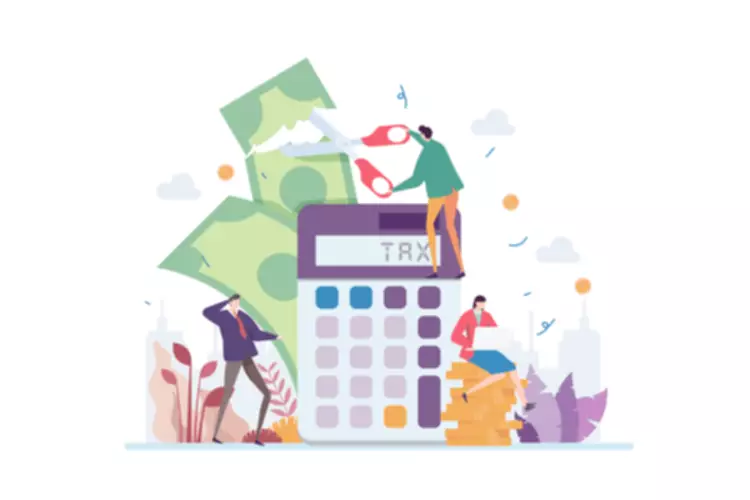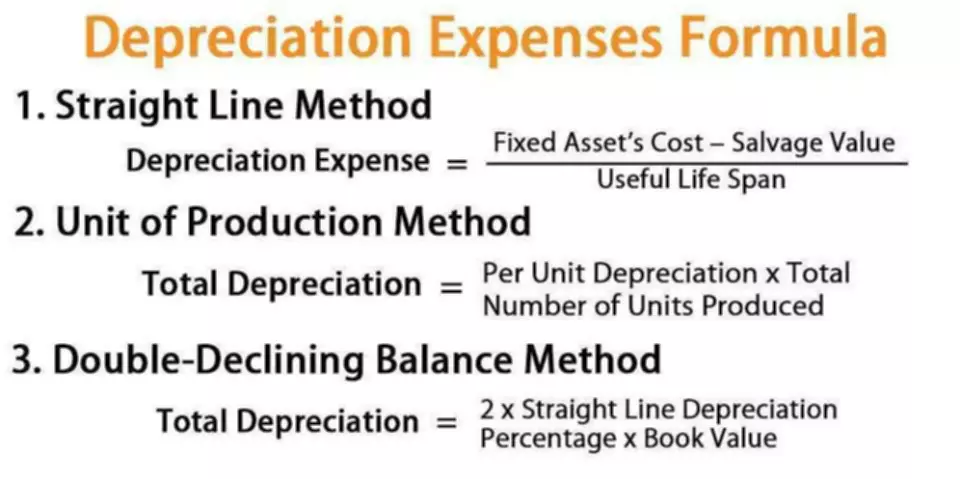Bookkeeping
Leverage finance Wikipedia
Published
5 лет agoon
By
EditorContent

He is directly responsible for all trading, risk, and money management decisions made at ArctosFX LLC. He has Master of Business Administration in finance from Mississippi State University. Well, we can sell the house for 90k, pay off our loan and are left with… zero! Similarly, a 10% dip in prices becomes a 100% loss of equity — we’re wiped out! As you can see, the ratios look at debt compared to another metric or vice versa.
- The higher the earnings per share , the more profitable the company is.
- Some believe that instead of settling for modest returns, investment companies and borrowers got greedy, opened leverage positions, and caused major market repercussions when their leveraged investments missed the mark.
- Increases or decreases in sales don’t have as much impact on its income.
- If the investor can cover its obligation by the income it receives, it has successfully utilized leverage to gain personal resources (i.e. ownership of the house) and potential residual income.
- Given the high financial leverage and the group’s having initially paid above-market prices, many of their loans were underwater.
- A high ratio isn’t necessarily bad, but a potential investor would want to know why it’s out of line with peers.
These are some of the methods available for utilizing financial leverage. To calculate the return on investment using financial leverage, subtract the purchase price from the final value, divide the result by the purchase price, and multiply that number by 100. For example, if a company’s equity is equal to $500,000 and its debt is approximately $25,000, its rate is 5%. This means that the company is financially solvent and a safe investment that will likely yield reliable returns to its investors. A lower rate means a safer investment, and a safer investment means more potential investors and more revenue for the company. Companies can sell preferred stock to the public for a certain price. Let’s say Leverage, Inc. sells 1,000 shares of preferred stock for 1 dollar each.
Leverage Ratio
Simultaneously, one should be conscious of the risks involved in increasing debt financing, including the risk of bankruptcy. Therefore, it is suggested to have a trade-off between debt and equity so that the shareholders’ interest is not affected adversely. A leverage ratio is any one of several financial measurements that look at how much capital comes in the form of debt, or that assesses the ability of a company to meet financial obligations.
Depending on the size of the company, businesses will sometimes take on hundreds of thousands of dollars of debt in order to leverage it and purchase assets. While that might seem like risky business, it’s the name of the game for competing corporations looking to outgrow each other. Work on Basel II began in the early 1990s and it was implemented in stages beginning in 2005. Basel II attempted to limit economic leverage rather than accounting leverage. It required advanced banks to estimate the risk of their positions and allocate capital accordingly. While this is much more rational in theory, it is more subject to estimation error, both honest and opportunitistic.
What is Leverage?
In comparison, financial leverage is a firm’s ability to use capital structure to earn better returns and reduce taxes. Instead of looking at what the company owns, a company can measure leverage by looking strictly at how assets have been financed. The debt-to-equity ratio is used to compare what the company has borrowed compared to what it has raised by private investors or shareholders. There is an entire suite of leverage financial ratios used to calculate how much debt a company is leveraging in an attempt to maximize profits. The operating leverage formula measures the proportion of fixed costs per unit of variable or total cost. When comparing different companies, the same formula should be used. Financial leverage also presents the possibility of disproportionate losses, since the related amount of interest expense may overwhelm the borrower if it does not earn sufficient returns to offset the interest expense.

It’s also called a leverage or gearing ratio — move the big gear one cycle and move the small gear many cycles. Super-strength is https://www.bookstime.com/ great when times are good, and horrific when you accidentally “bite your tongue” (it’s super-strength, not invulnerability).
The Risk and Benefit of Leverage
Jeffrey M. Green has over 40 years of experience in the financial industry. He has written dozens of articles on investing, stocks, ETFs, asset management, cryptocurrency, insurance, and more. Jeff has held life and health insurance licenses in multiple states, including FINRA Series 7, 66, and 24, plus Certified Retirement Counselor and Certified Divorce Financial Analyst designations. If you need more information on why financial leverage is important, you can post your legal need on UpCounsel’s marketplace.

They show how much of an organization’s capital comes from debt — a solid indication of whether a business can make good on its financial obligations. Measures the amount of debt used to finance business operations versus the amount of stockholders’ equity. Bankers and investors use debt to equity to evaluate the risk of a loan. Leverage ratios are a tool to measure the risk and health of a business.
Financial leverage should be tracked by all businesses
If you have shareholders, you will need to multiply the number of outstanding shares by the current price of the stock. Be sure to include both short-term and long-term debt when completing the calculation. The swimming pool company wants to double its business in the next year but does not have enough retained earnings to actualize that goal. It decides to take out a business loan to finance the growth it would like to achieve. If the same business borrows the entire sum of $5 million to purchase the property, that business is considered to be highly leveraged.
- It is mostly used to boost the returns on equity capital of a company, especially when the business is unable to increase its operating efficiency and returns on total investment.
- But again, a higher ratio may be more acceptable in certain industries (e.g., capital-intensive businesses).
- Levering has come to be known as «leveraging», in financial communities; this may have originally been a slang adaptation, since leverage was a noun.
- A capital requirement is a fraction of assets that must be held as a certain kind of liability or equity .
- Yet if the leverage leads to a higher investment return, compared to the rate of interest a company is paying on a loan, the level of leverage is reduced.
Generally, banks are required by the Federal Reserve to maintain a 5% leverage ratio. Your debt to equity ratio (0.60) shows that your equity makes up most of your business’s resources. financial leverage A healthy leverage ratio can vary depending on your business and the industry you’re in. The return on assets would, of course, vary with the assumed level of output.
You may like
Content

Wave invoicing allows you to create and send professional invoices in just a few clicks. The software also allows you to set up recurring invoices and track payments. The banking feature lets you manage all of your connected accounts, add a new account, or verify your identity to increase payment time, which is done using Wave Payments. Wave has also added an insurance option, which wave accounting allows you to obtain a quote for business insurance through Next Insurance. While this is a nice idea, it seems like the insurance option would be more at home under Integrations or Resources. This review will walk through the features and services offered by Wave. We’ll discuss the product’s usability, customer service, and any major benefits or drawbacks of the software.
Just like Sunrise’s dashboard, the Wave dashboard displays an overview of your business performance, plus a direct link to connect your bank or credit card account. If you leave for us to guide you then Zarmoney is the best bet for you. It is easy to use and includes wide functionality and scalability to cater to all your business’s accounting needs. Overall, Zarmoney has outstanding reviews, affordable pricing, and an interactive user-friendly dashboard. It’s an economical and rewarding choice for small businesses. FreshBooks is great for firms that struggle with accounting management.
What Is PRINCE2 Project Management Methodology? Pros, Cons & More
However, small companies and businesses usually prefer cost-effective and easy-to-operate options to cater to their needs. Wave is free of cost and effective accounting software that offers a bunch of free services from sending invoices, tracking expenses, and generating financial reports. Like Wave, QuickBooks Online is easy-to-use, cloud-based accounting software.
- We’re firm believers in the Golden Rule, which is why editorial opinions are ours alone and have not been previously reviewed, approved, or endorsed by included advertisers.
- When it comes to Wave payroll, the monthly fee starts at $20 plus $6 for each employee or contractor for states where payroll taxes must be paid and filed manually.
- Wave has also stated that customer statements will soon be added to a future Wave release, which will allow you to automatically remind your customers when their payment is late.
- This software has a more user-friendly interface and a cleaner structure, and it works on any device.
With the free version of Wave, you can still do your bookkeeping and track expenses. However, you won’t be able to send invoices or process payments. With Wave, you can manage employee payroll with features https://www.bookstime.com/ like tax form generation, time sheets, and more. While this section comes at an additional cost, it’s probably worth the investment to have all company functions recorded within one software tool.
Review of Wave Accounting – Cash Management
Performance information may have changed since the time of publication. Ability to accept online credit card and bank payments within invoices using Wave Payments . Both Akaunting and Wave offer their users similar options within the basic free package. However, Wave lags far behind when it comes to bolt-on apps you can integrate seamlessly with the standard product.
- S not the perfect pick for business owners who want to add accounting features as they grow.
- For more advanced tools that will serve larger product-based businesses, look to Zoho Books or QuickBooks Online.
- In 10 years, Wave has grown to more than 250 workers with more than 500,000 clients of entrepreneurs and freelancers around the globe.
- Wave also has some of the most appealing invoices on the market.
- Payroll fees vary, with supported states paying a $35 monthly fee, while the other states are charged $20 per month.
- It is not the vendor or bank advertiser’s responsibility to ensure all posts and/or questions are answered.
Bookkeeping
Accounting Explained With Brief History and Modern Job Requirements
Published
3 года agoon
24.03.2022By
EditorContent
Without accounting, investors would be unable to rely on timely or accurate financial information, and companies’ executives would lack the transparency needed to manage risks or plan projects. Regulators also rely on accountants for critical functions such as providing auditors’ opinions on companies’ annual 10-K filings.
The funds for smaller accounts are recorded again as part of a larger account. For example, if equipment is first separated in its own account to show all production expenses, it uses double-entry accounting when it is later included in the assets account. These items within the smaller account are consolidated with Types Of Accounts In Accounting other small accounts to represent a larger category. Let’s look at some of the most common sub-account types businesses use in various industries. Keep in mind that these sub-accounts go into one of the five real accounts . Financial accounting is the set of rules used to compile a company’s financial statements.
Revenue accounts
From there, you can add any expense reporting categories that you feel are necessary. Arguably, the most important part of bookkeeping is keeping track of your earnings and spending via the two main types of accounts, income and expenses. Accounts related to expenses, losses, incomes and gains are called nominal accounts.
- And you can trust that it’s more accurate than trying to juggle your transactions across a limited landscape.
- If a person gives something to a firm, it must be recorded as credit in the books of accounts.
- Business owners either handle their accounting themselves or they hire someone else to do it.
- All of God’s creations are included in these types of personal accounts.
- Post adjusting journal entries at the end of the period to reflect any changes to be made to the trial balance run in Step 3.
- Due to the fact that the bank account belongs to a legal entity, it is considered a personal account & treated accordingly.
Accumulated Depreciation is known as a contra asset account because it has a credit balance instead of a debit balance that is typical for asset accounts. Whenever Depreciation Expense is debited for the periodic depreciation of the buildings, equipment, vehicles, etc. the account Accumulated Depreciation is credited.
Checking Account Basics
Financial accounting is the widely-accepted method of preparing financial results for external use. Companies may be required to present their financial position to auditors. Auditors analyze the financial statements to ensure that property financial accounting guidance has been used and the reports are free from material misstatements.
The cost of vehicles is to be depreciated over the vehicles’ useful lives. This account reports the cost of the machinery and equipment used in the business. The cost of equipment will be depreciated over the equipment’s useful life.
Credits
The specific expense accounts found in any small business are related to the type of business that is being operated. In addition to current assets and long-term assets, the company tracks current and long-term liabilities. Current liabilities include accounts payable and other payables like income tax, payroll taxes, and sales tax, as well as accruals such as wages payable. These current liabilities are those debts that must be paid within one year or within the normal operating cycle of the business. On the other hand, long term liabilities include long-term debt and other debts that are due in more than 12 months. There is also a third type of account that we should mention – your liability account.
Sub-accounts show you exactly where funds are coming in and out of. And, you can better track how much money you have in each individual account. Your company’s expenses are anything you purchase to run your business. When you buy fuel for your company vehicle or stock up on office supplies, those purchases are considered company expenses. Investopedia requires writers to use primary sources to support their work.
Types of Accounting
The GL and, by extension, the COA should really show the financial transactions the business wants to monitor and measure. Consequently, the COA should have a logical link to the Key Performance Indicators of the business. While the concepts discussed herein are intended to help business owners understand general accounting concepts, always speak with a CPA regarding your particular financial situation. The answer to certain tax and accounting issues is often highly dependent on the fact situation presented and your overall financial status. Nominal accounts are closed at the end of the accounting period. For the next account period, these accounts start with a zero balance. Nominal accounts typically cover issues such as income, gains, expenses, and losses.
Small businesses may have a mixture of short-term and long-term liabilities. Short-term liabilities often involve claims to creditors and employees in the normal course of business, such as accounts payable, accrued expenses and payroll liability.
The Five Types of Accounts in Accounting
Even if you do hire an accountant, it’s important that you have a basic understanding of what is involved. Start by learning about the five major accounts, so you know how to read financial reports. Equipment that is owned by the business may include machinery https://simple-accounting.org/ used in the manufacturing of products or computers used at the office. Equipment is recorded in the asset account, since it is owned by the business and brings value. Use the list below to help you determine which types of accounts you need in business.
Account takeover is on the rise: how to protect yourself — — FinanceFeeds
Account takeover is on the rise: how to protect yourself -.
Posted: Fri, 28 Oct 2022 16:28:02 GMT [source]
A statement of cash flow reports how a company used cash during a specific period. The report is broken into sections that summarize the operating, financing, and investing sources and uses. Financial accounting guidance dictates when transactions are to be recorded, though there is often little to no flexibility in the amount of cash to be reported per transaction. The second set of rules follow the cash basis method of accounting. Instead of recording a transaction when it occurs, the cash method stipulates a transaction should be recorded only when cash has exchanged.
All expenses and losses are to be debited, all incomes and gains are to be credited. The theoretical value of the business that would be distributed to the owners after the assets were sold and the liabilities paid. Cost of Goods Sold is the cost of acquiring raw materials and turning them into finished products. It does not include selling and administrative costs incurred by the whole company, nor interest expense or losses on extraordinary items. A debit is commonly abbreviated as dr. in an accounting transaction, while a credit is abbreviated as cr.
- Revenue may be earned by providing goods or services as well as earnings from investments.
- Hence the balance sheet accounts are called permanent accounts or real accounts.
- The Chart of Accounts organizes the General Ledger accounts in a logical way that provides easy reference.
- There can be restrictions on the ability of a CD holder to cash in early, usually involving the loss of a portion of the interest that has already been earned.
- It may also include investments in the common or preferred stock of another corporation if the stock can be easily sold on a stock exchange.
- Assets and expenses increase when you debit the accounts and decrease when you credit them.
- The following list describes a number of the more common bank account types.
Bookkeeping
What to Look For When Hiring a Property Management Bookkeeper
Published
4 года agoon
17.12.2021By
EditorContent

Sage 300 has a construction-focused version of its bookkeeping program available for your use. Rhino will receive compensation from insurers based on insurance Rhino places for the benefit of a landlord and their individually bonded tenant. Deposit Management services are not an insurance product and are provided exclusively by Rhino Management Services LLC. It made sense for Tom and Fred to purchase a property for their own business needs as they started to grow. They found a good location with some extra space to lease out as a business investment. The new site gave them additional room to grow Widgets without the disruption of moving their business again in a few years. U.S. Based Account Managers with Property Management Industry experience who are dedicated to your books, giving you time back to grow your business.
Best Property Management Accounting Software — 2022 Reviews — Software Advice
Best Property Management Accounting Software — 2022 Reviews.
Posted: Sun, 24 Sep 2017 23:52:54 GMT [source]
Property owners request the rents be deposited directly into their bank account, not the property https://www.bookstime.com/ manager’s bank account. Have they managed properties similar to what you’re hiring for?
Part III: Property management accounting best practices
They can handle financial reports on profit/loss, Y-o-Y data, balance sheet, trial balance, general ledger, and cash flow statement. For instance, the platform automatically syncs properties and charges from the account, and imports transactions automatically from debit and credit cards. You can view profit and loss, cash flow, and balance sheets by property while tracking income and expenses with ease. As you grow your business, be sure to open separate accounts for each rental property that you own. By doing so, your income and expenses will be kept separate on a per-property basis.
There are so many tools out there that can help you be better at rental property accounting. Some are designed specifically for real estate accounting, some are not. Here’s a quick list of some of the rental property accounting apps that will help you improve your tracking and automation on the financial side of your business. Property Management Accounting addresses these topics and more, giving the accountant a firm grounding in how to deal with any property-related accounting issue that may arise. To create a chart of accounts, you can go with something as basic as an Excel spreadsheet, or you can upgrade to a property management software solution to help you put it together.
Velan’s Real Estate Bookkeeping Services
We want to be the dominant source for educating and training bookkeepers in the residential property management industry. No matter the needs of your property management business, we’re here to help. Realtyzam is a cloud-based solution that lets you review your expenses and track fees and other things that might enter your business.
- AppFolio is a better fit for mid to large-sized property landlords with at least 200 units.
- With LedgersOnline, you get all of your bookkeeping needs met in one place.
- Deposit Management services are not an insurance product and are provided exclusively by Rhino Management Services LLC.
- Buildium also offers a 10% discount for anyone who signs up for annual billing.
- Because of the many features and the option to add additional tools, commercial users would be able to optimize MRI Software as well as their partner relationships.
- As each chart of accounts is different, it gets harder and harder to memorize the correct accounts as more properties are added to the portfolio.
- But there are a few customer complaints about wanting more access to a live person to talk through support issues.
It’s now become the worst possible situation for cross-liability. Good bookkeeping goes hand in hand with top-notch property management.
Best for Multiple Users
Take past information to predict the company’s financial future. Brian Carmody is a writer and president of a manufacturing company who specializes in commercial lending, investing, and business loans. Brian is also an expert in home ownership, business essentials, and small businesses. He has a Political Science degree from the College of the Holy Cross and numerous quality improvement certificates from The Juran Institute. Hiring an offshore real estate bookkeeper is ideal for your business, as it gives you access to someone who understands what your business requires. Coverage is subject to actual policy terms, conditions and exclusions and is currently not available in HI, MT, ND or WY. Coverage is subject to underwriting approval and may not be available to all persons, even if offered in your state.
- Online records management, accounting, tenant screening, letter templates.
- This should be used and implemented as it helps us get accurate and fast result.
- Because of this, it tends to be the accounting method that most sole proprietors choose to use.
- If your property management business is small and not very complicated, you can take a stab at generating your own financial statements.
- Finally, we investigated each company’s history in the market and their reputation for customer service and reliability.
- Your tenant pays you up front for four months’ worth of rent, to be tracked monthly, totalling $8,000.
- Instead of laboring to enter in each line of the statement, you can just verify that the imported transactions are applied to the right accounts.
These records are what entrepreneurs can use to analyze the financial performance of their business, otherwise known as accounting. To create your chart, you can either go with a simple Excel spreadsheet, or use a PMS solution or an accounting software to automate the process for you. Scaling the business management model is additive—each new client adds to the workload, and after a certain point, the sheer number of accounting books becomes overwhelming to manage. It also is unsatisfactory in separating the liability-producing operation activities from the asset holding company. Property management should be separate from property ownership for two reasons.
When you receive a payment from a tenant if you’re a landlord or from a landlord, if you’re a property management company, that’s revenue. A comprehensive set of financial reports and useful reports is included.
- From free trials and setup fees to monthly minimums and add-on charges, there’s a lot to consider on price alone.
- It also provides visual data representations to help you see how your company is performing.
- Real Estate accounting and bookkeeping services will help you identify margins by each location.
- He owns these in conjunction with his long-time business partner, Fred.
- Rent Manager has the most complete accounting system with advanced features that handle all aspects of a business’s finances and documents.
- Our real estate bookkeepers are highly trained in their areas of expertise and can do much more than just recording business transactions.
- A chart of accounts is a clear and detailed list of all assets, liabilities, equity, revenues, and expenses that a property owner tracks.
Fortunately, most accounting software can set reminders and multiple accounts, which mainly automates this process. If you use NNN leases, you’ll need to set up a way within your accounting system to track everyday area expenses and real estate bookkeeping set up annual billing for tenants. One of the most common mistakes of business owners who manage their accounting, or employees who handle accounting who aren’t trained accountants, is adding general ledger accounts too liberally.
Keeping your business account separate from your clients ensures that all of your financial statements accurately reflect what your income and liabilities are versus theirs. Property management operations should be conducted within one management company to limit the spread of liability and make the workflows easy to follow. All accounting entries are completed in one system and tracked to each property, tenant, and property ownership company. The accounting entries are automatically pushed to a linked accounting system. All property and financial reporting are self-contained within the integrated systems. If you are deciding to hire a property management company, ask them to explain their bookkeeping system to you.

Will do Turnitin scan past essays
May I fork out someone to prepare my school essay
What Does Viruses Do To Your Computer
TOP
-
Uncategorized3 года ago
-
Fix Driver Errors3 года ago
What Does Viruses Do To Your Computer
-
blog3 года ago
The amount regarded as a 2 webpage essay
-
blog3 года ago
Will do Turnitin scan past essays
-
blog3 года ago
May I fork out someone to prepare my school essay
-
Uncategorized3 года ago
Avast Antivirus Assessment
-
Uncategorized3 года ago
FaceTime — How to Use the Screen Share and ‘SharePlay’ Capabilities
-
Uncategorized3 года ago
Grade School Research Classes






